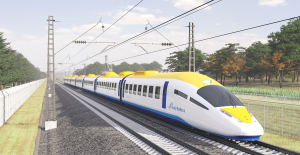As the territory planning procedures for the infrastructure maintenance depots, which will ensure the maintenance of all sections of Rail Baltica, are underway, the procurement of their design services has also been announced. Tenders were announced by LTG Infra, the company responsible for the implementation of the Rail Baltica project in Lithuania.
The successful tenderer of the procurements of design services and project execution supervision of the infrastructure maintenance depots in Kaunas and Panevėžys will prepare the engineering projects that will design the administrative and rolling stock maintenance, and fire and rescue train buildings, warehouse buildings, storage areas, access and service roads and other infrastructure necessary for the functioning of the depot.
 According to Dovydas Palaima, General Manager at LTG Infra Rail Baltica Management, once the Rail Baltica railway starts operating, the infrastructure maintenance depots in Kaunas and Panevėžys will become important economic centers of the regions: “They will not only create new jobs but also added value for the regions.”
According to Dovydas Palaima, General Manager at LTG Infra Rail Baltica Management, once the Rail Baltica railway starts operating, the infrastructure maintenance depots in Kaunas and Panevėžys will become important economic centers of the regions: “They will not only create new jobs but also added value for the regions.”
It is planned that the supplier who wins the tender will provide the services within a year and a half. During this time, engineering projects would be prepared, and construction permits would be obtained. It is expected to sign the contract in the second quarter of 2023.
Currently, the planning of the railway infrastructure maintenance depots in Kaunas and Panevėžys is underway – concrete solutions have been made public. The specific territories required for the construction of depots and related facilities are provided in the special spatial planning document, which is available to all stakeholders.
Rail Baltica is the largest railway infrastructure project in the history of the Baltic States, which will build a fully electrified double-track European gauge railway connecting Warsaw, Kaunas, Vilnius, Panevėžys, Riga, Pärnu, and Tallinn. The total length of Rail Baltica in the Baltic States is 870 km, with 392 km in Lithuania, 265 km in Latvia, and 213 km in Estonia.
